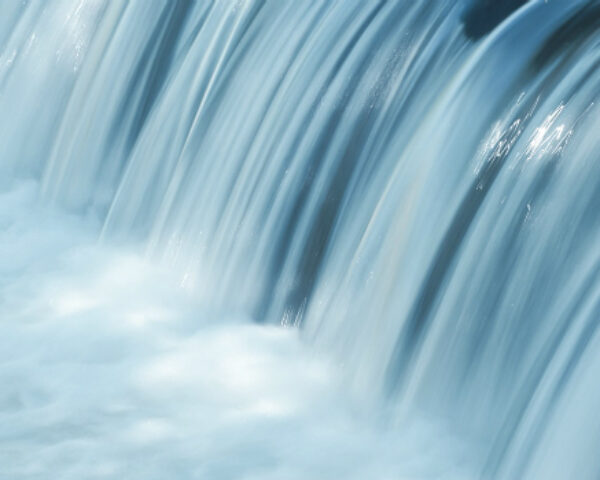On December 11, 2018, the Environmental Protection Agency and U.S. Army Corps of Engineers (“agencies”) released a Revised Definition of “Waters of the United States.” The rule, available in a pre-publication version as of this writing, endeavors to establish bright-line categories and eliminate case-by-case application of the “significant nexus” test articulated by Justice Kennedy in the U.S. Supreme Court’s 2006 decision in Rapanos v. United States.
The proposed definition of “waters of the United States” includes six categories of waters: traditional navigable waters and territorial seas, impoundments, tributaries, ditches, lakes and ponds, and adjacent wetlands. Interstate waters would not be a separate category of waters. Instead, only those interstate waters falling into one of the other six categories would be jurisdictional. Similarly, while the agencies are not proposing any changes to the impoundments category, they are seeking comment on whether impoundments could be incorporated into another category of waters.
The agencies propose changes to several of the other categories. First, they are proposing to define “tributary” as “a river, stream, or similar naturally occurring surface water channel that contributes perennial or intermittent flow to a traditional navigable water or territorial sea in a typical year either directly or indirectly through other jurisdictional waters….” The definition does not include “surface features that flow only in direct response to precipitation.” A tributary would not lose its jurisdictional status if it is altered or relocated, or “if it flows through a culvert, dam . . . debris pile, boulder field, or similar natural break so long as the artificial or natural break conveys perennial or intermittent flow to a tributary or other jurisdictional water at the downstream end of the break.”
Next, the agencies propose “ditches” as a new category to reduce confusion regarding when a ditch is jurisdictional. The agencies would define ditches as “artificial channels used to convey water.” Ditches would be considered “waters of the United States” if they (1) meet the definition of traditional navigable waters or territorial seas; (2) are constructed in a tributary and also meet the definition of tributary; or (3) are constructed in adjacent wetlands and also meet the definition of tributary. All other ditches would be excluded. Alternatively, the agencies seek comment on whether ditches should be incorporated into the “tributaries” category.
The agencies are proposing a similar scheme for lakes and ponds. Lakes and ponds that themselves meet the definition of traditional navigable waters or territorial seas would be included in the definition of “waters of the United States.” Lakes and ponds that contribute perennial or intermittent flow to a traditional navigable water or territorial sea also would be included, as would lakes and ponds flooded by another category of jurisdictional waters in a typical year. (“Typical year” is one of many defined terms in the proposed rule, and means “within the normal range of precipitation over a rolling thirty-year period for a particular geographic area”). As with impoundments and ditches, the agencies seek comment on whether lakes and ponds should be incorporated into another category.
Finally, the agencies propose to include wetlands adjacent to another category of jurisdictional waters. “Adjacent wetlands” would be defined as “wetlands that abut or have a direct hydrologic surface connection to other ‘waters of the United States’ in a typical year.” Wetlands that are physically separated from jurisdictional waters and also lack a direct hydrologic surface connection are not adjacent. A wetland has a direct hydrologic surface connection “if the wetland and the jurisdictional water are connected via perennial or intermittent flow in a typical year.” Neither “mere hydrologic connection” nor “subsurface hydrologic connectivity” is sufficient to establish adjacency, nor would there be any requirement to establish an ecological interconnection between adjacent wetlands and other jurisdictional waters.
The agencies’ proposal also delineates eleven exclusions from the definition of “waters of the United States.” Any category of waters not included is excluded, but the definition specifically clarifies these exclusions, including groundwater, all ditches not satisfying the “ditches” definition, and stormwater control features constructed in uplands to handle stormwater runoff, among others. In addition, waste treatment systems are being defined for the first time in this proposed rule.
While this is merely a proposed rule, the agencies engaged in significant outreach efforts prior to drafting it, including consulting with state, local, and tribal officials, as well as seeking feedback from the agriculture, conservation, small-business, construction, transportation, environmental, mining, and energy sectors; academia; and the general public, among others. Comments received either were incorporated into the proposed definition, or were addressed in the preamble or made topics of requests for additional comment.
Given the extent of public involvement in drafting the proposed rule, it is unlikely that the final rule will differ significantly from the proposal, although there is room for additional simplification, such as consolidating some proposed categories of waters into others. The agencies expect to publish the final rule in September 2019.
For more information on this topic, please contact marketing@jordanramis.com or call (888) 598-7070.
Also Of Interest
EPA, Army Corps Release Proposed Rule Redefining “Waters of the United States” Under the Clean Water Act
December 21, 2021
On December 7, 2021, the Environmental Protection Agency (EPA) and the Department of the Army, Corps of Engineers (Army Corps), published a Proposed Rule to define the scope of waters covered by the Clean Water Act.
READ THE Blog

